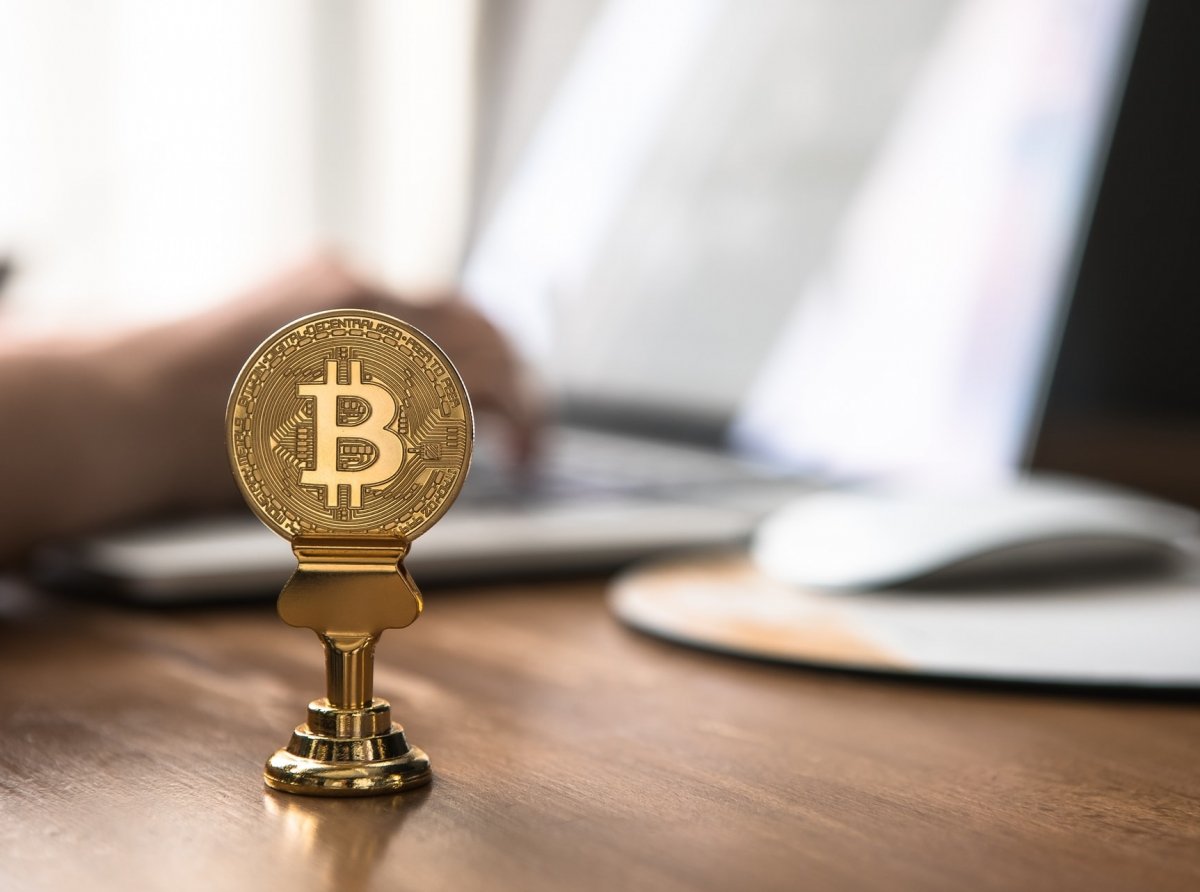Decentralized Finance (DeFi)

Over the past seven days, Bitcoin is up 18% and Ethereum is up 30%. Some believe the Decentralized Finance (DeFi) segment is to blame. Let's figure out what it is.
What is DeFi
DeFi is one of the fastest growing cryptocurrency segments. Yes, different segments have long been distinguished in crypt, such as blockchains themselves, stablecoins, digital collectibles (NFTs, non-fungible tokens), prediction markets, decentralized autonomous organizations (DAOs) and much more.
The idea is simple. If all traditional financial institutions (banks, exchanges) are just software controlled by some legal entities, why not make all these institutions on stand-alone Ethereum smart contracts or another blockchain?
This is how protocols appeared that allow, without the participation of an intermediary, to trade crypto on decentralized exchanges (Uniswap), lend (Compound), manage monetary policy and issue stablecoins (MakerDAO), rebalance assets (TokenSets), create derivatives (UMA), insure risks (Nexus Mutual) and generally do everything that traditional financial institutions do.
If ICO was about raising capital, then DeFi is about all the other functions of the traditional financial market.
What is DeFi
DeFi is one of the fastest growing cryptocurrency segments. Yes, different segments have long been distinguished in crypt, such as blockchains themselves, stablecoins, digital collectibles (NFTs, non-fungible tokens), prediction markets, decentralized autonomous organizations (DAOs) and much more.
The idea is simple. If all traditional financial institutions (banks, exchanges) are just software controlled by some legal entities, why not make all these institutions on stand-alone Ethereum smart contracts or another blockchain?
This is how protocols appeared that allow, without the participation of an intermediary, to trade crypto on decentralized exchanges (Uniswap), lend (Compound), manage monetary policy and issue stablecoins (MakerDAO), rebalance assets (TokenSets), create derivatives (UMA), insure risks (Nexus Mutual) and generally do everything that traditional financial institutions do.
If ICO was about raising capital, then DeFi is about all the other functions of the traditional financial market.
Market size
Today, the entire DeFi segment is valued at about $ 4 billion, which is approximately 1.5% of the total cryptocurrency market capitalization.
What is Market Size or DeFi Capitalization? Unlike ICOs, where the market size meant the amount of funds raised, in the case of DeFi, this means (a) the amount of funds that are stored in smart contracts of the respective protocols as collateral (collateral), and (b) the cost of tokens, which give a voice in the management of protocols.
A good barometer of the DeFi market can be viewed on the DeFiPulse website, which constantly updates the total crypto market capitalization and presents the main categories.
Why do protocols need collateral (collateral)
In order to reduce risks. For example, do you want to receive stable currency Dai in exchange for volatile ETH with the ability to get your ETH back at the original price when it grows up? To do this, you need to deposit ETH in a ratio of 1 to 1.7. That is, for every dollar in Dai, you need to deposit $ 1.7 in ETH. This is to ensure the operation and security of the protocol.
Many other lending protocols work in a similar way. To get a loan, you must already be a member of the crypto economy and post a collateral. Loans without collateral in a decentralized world are not possible until the concept of distributed reputation and identity emerges. In other words, while it is impossible to conduct credit scoring of anonymous wallets based on the history of their behavior, all credit relations will be based on the full bank reserve model.
Today, the entire DeFi segment is valued at about $ 4 billion, which is approximately 1.5% of the total cryptocurrency market capitalization.
What is Market Size or DeFi Capitalization? Unlike ICOs, where the market size meant the amount of funds raised, in the case of DeFi, this means (a) the amount of funds that are stored in smart contracts of the respective protocols as collateral (collateral), and (b) the cost of tokens, which give a voice in the management of protocols.
A good barometer of the DeFi market can be viewed on the DeFiPulse website, which constantly updates the total crypto market capitalization and presents the main categories.
Why do protocols need collateral (collateral)
In order to reduce risks. For example, do you want to receive stable currency Dai in exchange for volatile ETH with the ability to get your ETH back at the original price when it grows up? To do this, you need to deposit ETH in a ratio of 1 to 1.7. That is, for every dollar in Dai, you need to deposit $ 1.7 in ETH. This is to ensure the operation and security of the protocol.
Many other lending protocols work in a similar way. To get a loan, you must already be a member of the crypto economy and post a collateral. Loans without collateral in a decentralized world are not possible until the concept of distributed reputation and identity emerges. In other words, while it is impossible to conduct credit scoring of anonymous wallets based on the history of their behavior, all credit relations will be based on the full bank reserve model.

Decentralized Finance (DeFi)
Who manages the protocols
It all depends on the specific protocol and the stage of its development. At launch, developers tend to retain a significant degree of influence over the protocol and its participants. They have a red button.
With development, many protocols are transferred to user control. For this, tokens are used that give the right to vote. For example, the MKR token gives the right to vote on which assets can be accepted as collateral for the issue of the Dai stablecoin. While the Synthetix derivatives platform is managed by three DAOs, where SNX holders have voting rights. By the way, Synthetix smart contracts contain about $ 0.5 billion in other crypto assets.
It all depends on the specific protocol and the stage of its development. At launch, developers tend to retain a significant degree of influence over the protocol and its participants. They have a red button.
With development, many protocols are transferred to user control. For this, tokens are used that give the right to vote. For example, the MKR token gives the right to vote on which assets can be accepted as collateral for the issue of the Dai stablecoin. While the Synthetix derivatives platform is managed by three DAOs, where SNX holders have voting rights. By the way, Synthetix smart contracts contain about $ 0.5 billion in other crypto assets.
How to Invest in DeFi
Normally:
Buy individual DeFi tokens on exchanges,
Buy an index token, like sDEFI, or
Transfer funds to the management of a thematic investment fund.
Many useful interfaces have been created for keeping records, such as Zerion or InstaDapp.
What are the legal nuances
In the ICO era, it all came down to whether the transaction to issue a token or the token itself is a security in the meaning that the American regulator gives to this term according to the Howey test rules. Now, at the first approximation, there are more difficulties, but the regulators are not yet very active.
First, what is a DAO in terms of law? A DAO is not a legal entity, but can very well be viewed as a partnership (partnership) where partners interact by expressing their will through a protocol. The danger with this approach is that the members of such a partnership may be held accountable for the DAO's obligations to each other or to other users (if the protocol provides for different roles). Although, to be honest, so far this is from the world of theory, because it is unlikely that someone will make claims to anonymous wallets.
Second, do smart contract developers have any obligations to end users? It seems that no, on the principle of "caveat emptor" - the user / buyer bears all the risks. Together however, we should not forget that in the scientific world, discussions continue on how to impose fiduciary obligations on developers of smart contracts, that is, obligations to act reasonably and in good faith in the interests of potential users. Such obligations entail liability in the event of violations.
Normally:
Buy individual DeFi tokens on exchanges,
Buy an index token, like sDEFI, or
Transfer funds to the management of a thematic investment fund.
Many useful interfaces have been created for keeping records, such as Zerion or InstaDapp.
What are the legal nuances
In the ICO era, it all came down to whether the transaction to issue a token or the token itself is a security in the meaning that the American regulator gives to this term according to the Howey test rules. Now, at the first approximation, there are more difficulties, but the regulators are not yet very active.
First, what is a DAO in terms of law? A DAO is not a legal entity, but can very well be viewed as a partnership (partnership) where partners interact by expressing their will through a protocol. The danger with this approach is that the members of such a partnership may be held accountable for the DAO's obligations to each other or to other users (if the protocol provides for different roles). Although, to be honest, so far this is from the world of theory, because it is unlikely that someone will make claims to anonymous wallets.
Second, do smart contract developers have any obligations to end users? It seems that no, on the principle of "caveat emptor" - the user / buyer bears all the risks. Together however, we should not forget that in the scientific world, discussions continue on how to impose fiduciary obligations on developers of smart contracts, that is, obligations to act reasonably and in good faith in the interests of potential users. Such obligations entail liability in the event of violations.
Third, are stablecoins electronic money? Depends on stablecoin. In 2019, the European banking regulator came to the conclusion that some tokens are just such electronic money in the understanding of EMD2. Even if a stablecoin is not electronic money, it can fall under the definition of a crypto asset (as this term is, for example, used in German law) or as a digital financial asset (“CFA” - as it is in Russia with the adoption of the law). The qualification of a token as e-money or digital currency generally entails the application of many other rules.
Fourth, is the automatic rebalancing of assets on smart contracts an investment advice, which is a regulated area in the US and Europe? Depends on the degree of control (discretion) that the developer retains after launching the smart contract.
Fourth, is the automatic rebalancing of assets on smart contracts an investment advice, which is a regulated area in the US and Europe? Depends on the degree of control (discretion) that the developer retains after launching the smart contract.
Fifth, should decentralized exchanges obtain licenses? On this issue, by the way, there are examples of actions by the regulator. In 2018, the SEC filed charges against developer EthreDelta, fining him $ 300,000.
Sixth, does crypto lending activities fall under national microfinance legislation? We are talking about loans through smart contracts by analogy with Compound and MakerDAO, where the lender is actually a protocol that does not have legal personality.
Seventh, if someone decides to attack the protocol by exploiting its flaws, is it harm (tort) or financial asset market manipulation? This is an interesting question, which again rests on the lack of legal personality of the protocol or DAO and the anonymous nature of the attacks.
Sixth, does crypto lending activities fall under national microfinance legislation? We are talking about loans through smart contracts by analogy with Compound and MakerDAO, where the lender is actually a protocol that does not have legal personality.
Seventh, if someone decides to attack the protocol by exploiting its flaws, is it harm (tort) or financial asset market manipulation? This is an interesting question, which again rests on the lack of legal personality of the protocol or DAO and the anonymous nature of the attacks.














Report
My comments